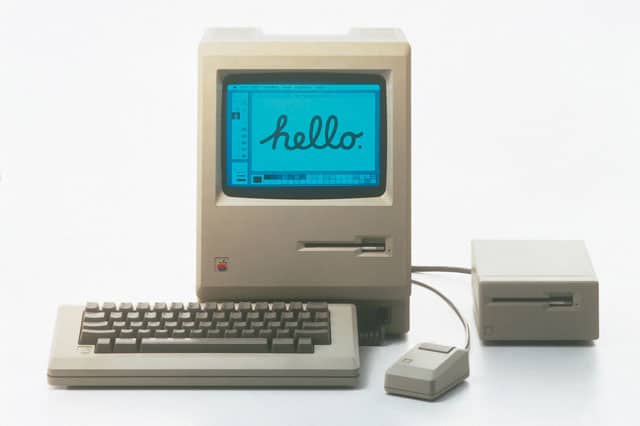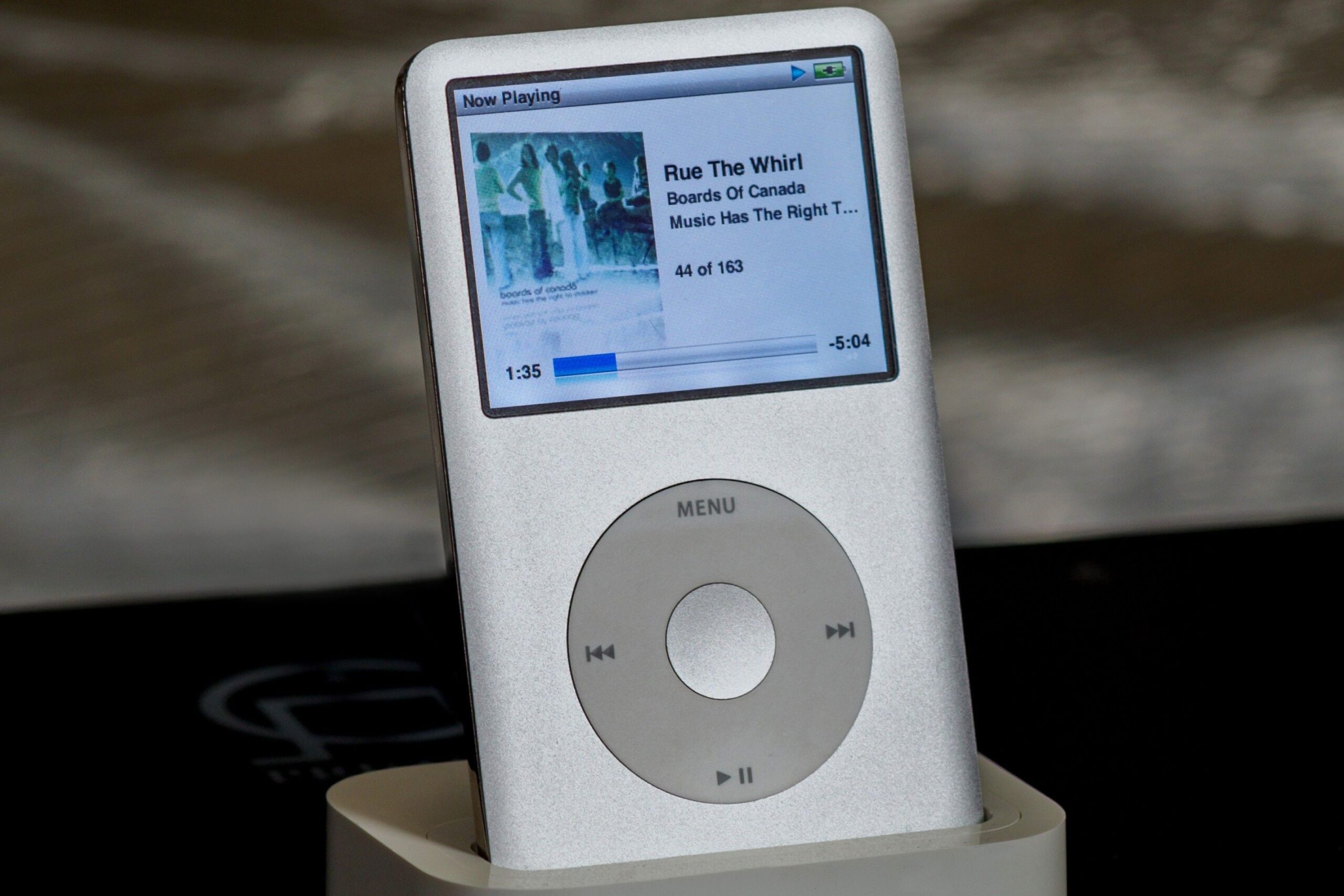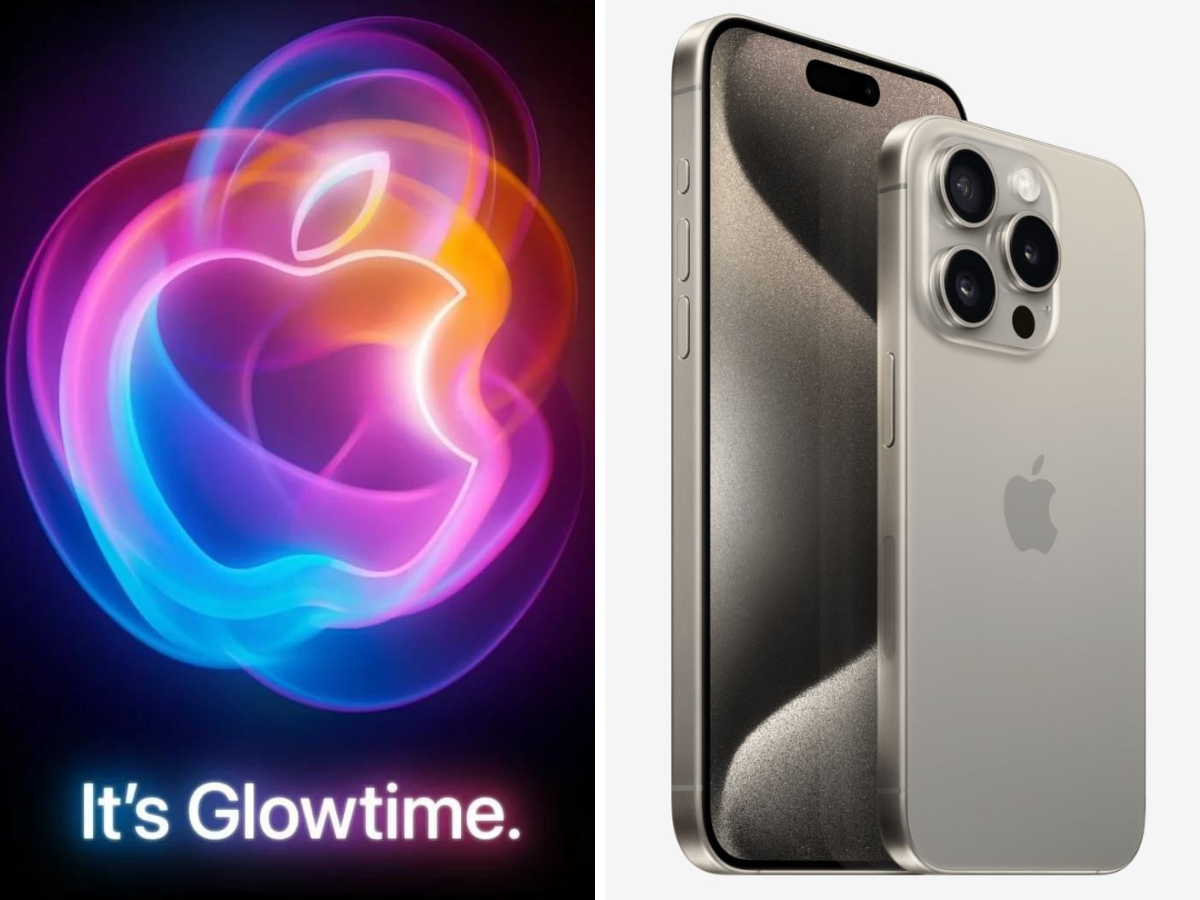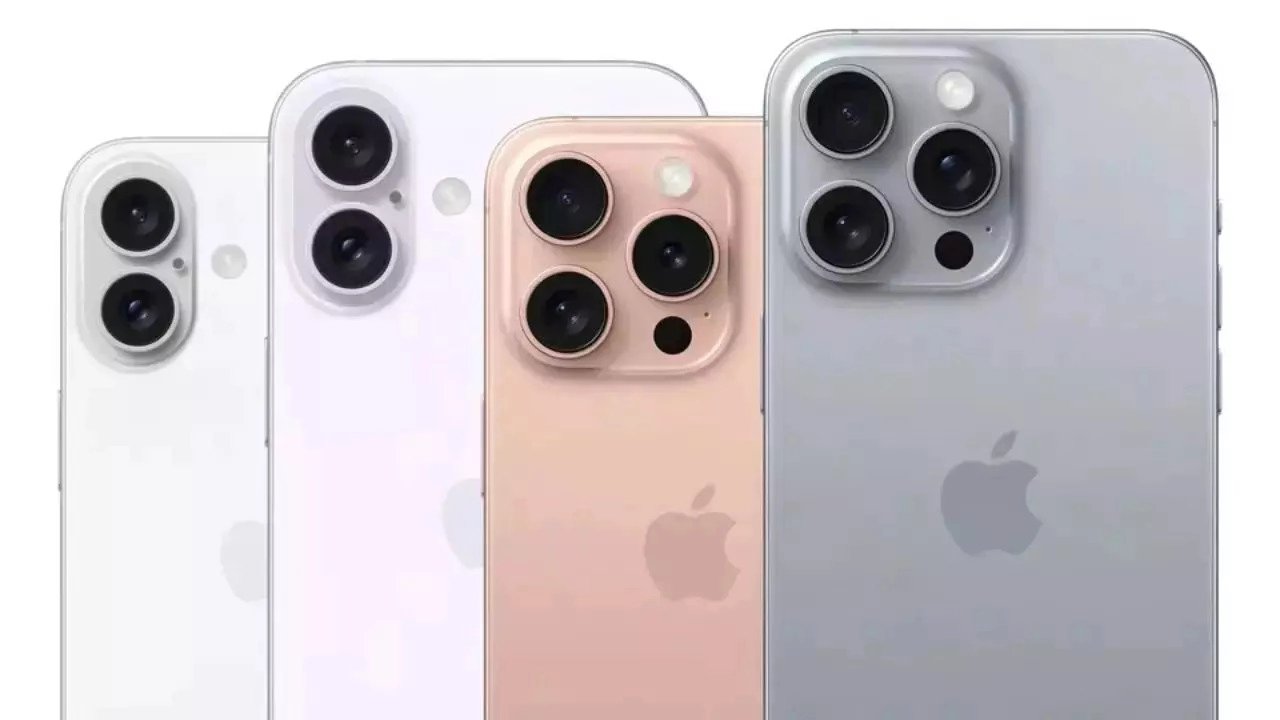Table of contents
Introduction
Apple’s Evolution and Cultural Impact
From its inception in 1976, Apple Inc. has revolutionized the way we interact with technology. Starting with the Apple I and moving through an era defined by innovation—whether in the personal computer market with the Macintosh or the mobile phone market with the iPhone—Apple has shaped industries, set trends, and redefined customer expectations. Apple products don’t just enter the market; they dominate it, with each release acting as a cultural milestone.

The iPhone, introduced in 2007, was a groundbreaking shift in mobile technology, combining a phone, an iPod, and an internet communicator all in one device. Since then, the iPhone has grown into an ecosystem of its own, capturing global attention with each new model and redefining the smartphone industry with each technological leap. Now, the iPhone 16 continues this legacy, and its launch represents a pivotal moment not just for Apple, but for the tech world at large.
The Global Significance of the iPhone 16
The launch of any new iPhone is more than just a product unveiling; it’s a global event. For consumers, it’s the chance to hold the future in their hands. For Apple, it’s an opportunity to showcase its latest technological advancements. For competitors, it sets the benchmark for what a smartphone should be. And for investors, it represents potential growth, profitability, and innovation.
The iPhone 16 launch comes at a time of great change in the tech industry. With growing markets like India becoming key players in Apple’s strategy, and with new technologies like AI, machine learning, and 5G playing an increasingly important role in mobile experiences, the iPhone 16 is poised to impact the global market in significant ways.
This blog post will explore the intricacies of the iPhone 16, its launch event, and its implications for technology, business, and society. From a deep dive into its technical specifications to an exploration of consumer reactions and future trends, this post will leave no stone unturned.
Apple’s Journey: A Brief History
Apple’s journey from a small garage-based startup to the tech giant it is today is nothing short of remarkable. Its origin story, spearheaded by Steve Jobs, Steve Wozniak, and Ronald Wayne, is often cited as the quintessential example of innovation meeting opportunity. The company’s initial offerings, such as the Apple I and Apple II, laid the foundation for what would become a revolutionary influence in the computing world.
The Early Years: Breaking into the Market
The introduction of the Macintosh in 1984 was a pivotal moment for Apple. The Macintosh was the first personal computer to feature a graphical user interface (GUI), making it much easier for non-technical users to interact with computers. It was also the birth of Apple’s reputation for aesthetic and functional design—two principles that would become cornerstones of its future product lines.

However, the company faced significant struggles throughout the late 1980s and early 1990s. Competition from Microsoft and the growing dominance of Windows forced Apple into difficult financial times. During this period, Apple experimented with several products, including the Newton PDA and various desktop computers, but none achieved widespread success.
The Return of Steve Jobs and the Rebirth of Apple
In 1997, Apple’s trajectory took a dramatic turn when Steve Jobs returned to the company after a hiatus. Jobs’ return sparked the beginning of Apple’s most innovative phase. Under his leadership, the company streamlined its product lines and introduced the iMac, which became a massive commercial success.

The real turning point came in 2001 with the release of the iPod, a product that revolutionized how people consumed music. The iPod was more than just a portable music player; it was a symbol of Apple’s design prowess and its ability to create devices that blended technology with culture.

This period also saw the creation of the Apple Store, a retail concept that transformed how consumers interacted with the brand. The stores became immersive spaces where Apple’s ecosystem was displayed in full force, further solidifying customer loyalty.
The Birth of the iPhone: A Technological Revolution
By 2007, Apple was ready to launch a product that would redefine not only the company but also the tech world as a whole—the iPhone. When Steve Jobs introduced the first iPhone, he famously described it as three products in one: a revolutionary phone, a widescreen iPod with touch controls, and a breakthrough internet communications device.

The first iPhone was unlike anything the world had seen before. Its multi-touch display, seamless integration with the internet, and sleek design catapulted it into global stardom. Each subsequent iPhone release pushed the boundaries of what smartphones could do, introducing new features like the App Store (iPhone 3G), Siri (iPhone 4S), and Face ID (iPhone X).
The Modern Era: Innovation and Global Dominance
In the years following Jobs’ death in 2011, Apple continued to innovate under the leadership of Tim Cook. The company expanded its ecosystem with new devices like the Apple Watch and AirPods, and further refined its services with offerings like Apple Music, iCloud, and Apple Pay.
The iPhone, however, has remained at the heart of Apple’s identity. Over time, it has evolved into a device that integrates seamlessly with Apple’s other products, creating an ecosystem that connects users across various aspects of their digital lives—from productivity and communication to entertainment and fitness.
The iPhone 16 marks the latest chapter in this ongoing story. It not only builds on the successes of previous models but also pushes Apple into new technological frontiers. With the inclusion of cutting-edge technologies like AI-powered features and enhanced connectivity, the iPhone 16 reflects Apple’s ability to stay at the forefront of innovation while remaining true to its roots.
Apple India: A Growing Market
India has emerged as one of Apple’s most important markets over the last decade. Despite challenges like higher import taxes and stiff competition from local brands and other global players, Apple has managed to carve out a niche in the Indian market by positioning its products as premium, aspirational items.
Apple’s Strategy in India
Apple’s strategy in India has shifted in recent years, with the company increasingly focusing on localization and making its products more accessible to Indian consumers. One of the key components of this strategy is manufacturing iPhones in India, a move that not only reduces costs but also circumvents hefty import taxes. Apple’s partnership with Indian manufacturers like Foxconn and Wistron has allowed it to produce models like the iPhone 13 and iPhone SE locally, with the iPhone 16 set to follow.

Another important aspect of Apple’s approach in India is its retail presence. The company opened its first physical retail store in Mumbai in 2023, followed by a second store in Delhi. These stores have become key touchpoints for Indian consumers, offering them the opportunity to experience Apple’s ecosystem firsthand.
iPhone Pricing in India: A Balancing Act
One of the major challenges Apple faces in India is pricing. The Indian smartphone market is highly price-sensitive, with most consumers opting for mid-range and budget smartphones. Apple’s premium pricing strategy makes the iPhone a luxury item, accessible only to a small segment of the population.
To address this, Apple has adopted several measures to make its products more affordable. These include offering financing options, trade-in programs, and special pricing for students. Additionally, older iPhone models are often sold at discounted rates in India, making them more accessible to a broader audience.
Despite these challenges, Apple’s market share in India is growing, particularly in the premium segment. The iPhone 16 is expected to further bolster Apple’s presence in India, with competitive pricing strategies and localized production helping to drive sales.
The iPhone 16 Launch Event
The anticipation for Apple’s iPhone 16 launch has reached a fever pitch, with tech enthusiasts, media outlets, and consumers eagerly awaiting what is expected to be a landmark event. While leaks and rumors have been swirling for months, the event will finally provide a clear picture of what Apple has planned for its latest flagship device. The iPhone 16 series has the potential to set new benchmarks in the smartphone industry, particularly with significant hardware improvements, enhanced AI capabilities, and a new generation of chips.
Pre-Launch Speculations and Leaks
In the lead-up to the event, some of the most intriguing information has come from renowned Apple insider Mark Gurman of Bloomberg. According to Gurman, despite previous reports suggesting that Apple might increase the price of the iPhone 16 Pro models, the company could keep the starting price of the entry-level Pro model at $999. This decision, if accurate, would mark a significant moment for Apple, given the inflationary pressures and the increasing cost of producing cutting-edge technology.

The possibility of maintaining the $999 starting price for the iPhone 16 Pro is particularly notable in the context of the ongoing global economic uncertainty. Apple’s decision to hold firm on pricing for its entry-level Pro model could signal confidence in the product’s ability to maintain demand without pushing consumers away with a higher price point. This pricing strategy will also be critical in markets like India, where the cost of flagship devices is often significantly higher due to taxes and import duties.
However, there is still some uncertainty regarding the pricing of the iPhone 16 Pro Max. Apple Hub had previously suggested that the Pro models might see a price increase, with the iPhone 16 Pro starting at $1,099 (around Rs 92,300) for the 256GB variant and the iPhone 16 Pro Max possibly priced from $1,199 (approximately Rs 1,00,700). The price strategy for these higher-tier models remains unclear, and Apple could very well choose to distinguish the Pro Max with a higher price due to its larger screen and enhanced features.
Notable Features of the iPhone 16 Series
Among the most exciting features expected in the iPhone 16 Pro series is the slimmer bezel design, which promises a more immersive viewing experience. The shrinking of bezels has been a gradual trend in smartphone design, with manufacturers continually pushing for a screen-dominant front. Apple is set to take this to new heights with the iPhone 16, making it one of the most visually striking smartphones on the market.
The new A18 chip is another focal point of the iPhone 16 launch. Apple’s in-house processors have consistently led the industry in performance, and the A18 chip is expected to further enhance the iPhone’s processing power, efficiency, and AI capabilities. With AI playing a growing role in everything from photography to app performance, the A18 chip will provide the horsepower necessary for next-generation AI-driven features.

Battery life is another area where Apple is expected to make significant improvements with the iPhone 16. Early leaks have hinted at better power efficiency and longer-lasting batteries across all models. This is a key area for consumers, as battery performance often tops the list of priorities for smartphone users.
Additionally, the inclusion of a touch-sensitive camera button across the iPhone 16 series is expected to enhance user interaction with the camera. This small but impactful design tweak is in line with Apple’s philosophy of making technology intuitive and easy to use.
iPhone 16 Pro and Pro Max: A Technical Deep Dive
The iPhone 16 Pro and iPhone 16 Pro Max are not just incremental updates; they represent the cutting edge of smartphone technology, with advanced features that set new standards for the industry. Apple’s focus on design, performance, AI integration, and camera improvements all come together in these models, which cater to both tech enthusiasts and professional users who demand the best from their devices.
Design and Display: Pushing the Boundaries of Aesthetics
Apple’s dedication to minimalist yet functional design is evident in the iPhone 16 Pro series. The most noticeable visual update is the slimmer bezels, which allow for a larger screen-to-body ratio without increasing the physical size of the phone. The 6.1-inch iPhone 16 Pro and the 6.7-inch iPhone 16 Pro Max feature Super Retina XDR displays with ProMotion technology, delivering smooth 120Hz refresh rates, brighter colors, and deeper contrasts. This makes the phones ideal for immersive media consumption, gaming, and professional editing work.
The Pro models’ displays also boast the latest OLED technology, which enhances power efficiency while providing crisp, vibrant visuals. Apple has improved peak brightness levels, making the iPhone 16 Pro and Pro Max even more readable in bright outdoor conditions. This is especially important for users who rely on their devices for work in various lighting environments.
A18 Chip: Powering AI and Performance
At the heart of the iPhone 16 Pro and Pro Max is the new A18 chip, which is expected to push the boundaries of what smartphones are capable of. Built on a cutting-edge 3nm process, the A18 offers significant improvements in performance and energy efficiency compared to its predecessor. This architecture allows Apple to pack more transistors into the chip, enhancing its computational power while keeping power consumption in check.

One of the A18 chip’s most significant advancements is its AI capabilities. The chip includes a next-gen Neural Engine, designed to handle more complex machine learning tasks. This enables features like real-time language translation, advanced photo and video editing, and predictive text suggestions to run faster and more accurately. AI is becoming an integral part of everyday smartphone usage, and the A18 chip ensures that the iPhone 16 Pro series remains at the forefront of this trend.
Moreover, the A18’s GPU offers substantial improvements in graphical performance, making the iPhone 16 Pro and Pro Max ideal devices for gaming, augmented reality (AR) applications, and professional-level video editing. Combined with the high-refresh-rate display, this makes for an incredibly smooth and responsive experience, even when running demanding apps.
Camera Innovations: A Focus on Creativity
Apple’s reputation for camera quality continues to be upheld with the iPhone 16 Pro and Pro Max. Both models feature a triple-lens camera system, but with a significant upgrade to the primary 48MP wide sensor. This sensor delivers improved low-light performance, thanks to its larger aperture and advanced sensor-shift optical image stabilization, ensuring that users can capture stunning, clear images even in challenging lighting conditions.
The Pro Max model, in particular, introduces an exclusive new feature: a periscope telephoto lens. This allows for up to 6x optical zoom, compared to the 3x zoom on the standard Pro model. The periscope design uses a series of mirrors to bend the light before it hits the sensor, effectively extending the focal length without requiring a bulky external lens. This makes the iPhone 16 Pro Max a powerhouse for mobile photography, especially for capturing distant subjects with precision.

Both models also benefit from advanced computational photography powered by the A18 chip. Apple’s AI-driven Smart HDR and Deep Fusion technologies now work in tandem with the new hardware to produce more detailed and dynamic images. This is particularly evident in portrait photography, where the combination of AI and optics allows for more accurate background separation and improved bokeh effects.
Video recording also sees enhancements, with the iPhone 16 Pro and Pro Max supporting ProRes video at higher resolutions and frame rates, making them suitable for professional filmmakers. The phones also feature enhanced stabilization for smoother handheld footage and the ability to capture Dolby Vision HDR, ensuring videos look vivid and cinematic.
Battery Life: Efficiency Meets Longevity
Battery life has long been a point of contention for smartphone users, but Apple seems to have made significant strides with the iPhone 16 Pro series. Thanks to the A18 chip’s improved efficiency and optimizations within iOS 18, the iPhone 16 Pro and Pro Max are expected to offer better battery performance than their predecessors.
The iPhone 16 Pro Max, with its larger physical size, naturally accommodates a bigger battery, which should provide enough juice for up to two full days of moderate use. The Pro Max’s battery efficiency is further enhanced by its larger display using ProMotion technology, which can dynamically adjust the refresh rate based on usage, conserving power when high refresh rates aren’t needed.
Moreover, Apple’s use of more power-efficient OLED panels and the A18’s thermal management means that even during intensive tasks like 4K video recording or high-end gaming, the devices will drain less power. Fast charging and MagSafe wireless charging also return with improved speeds, making it quicker than ever to recharge the iPhone 16 Pro series.
AI Integration: Ushering in the Next Generation of Smart Features
AI integration is at the core of many of the iPhone 16 Pro and Pro Max’s most advanced features. Whether it’s powering computational photography, enhancing Siri’s responsiveness, or predicting user behavior, AI now plays a more prominent role than ever in the iPhone experience.
One of the standout AI-driven features in the iPhone 16 series is personalized Siri suggestions. Siri can now anticipate user actions based on contextual cues, such as suggesting apps or actions that users might need based on their location, the time of day, or previous patterns. This helps streamline everyday tasks, making the phone feel more intuitive and responsive to the user’s needs.

AI also plays a role in the iPhone 16 Pro’s improved battery optimization. The device learns from the user’s charging habits and adapts accordingly, preserving battery health over time and providing more accurate battery life predictions.
Additionally, AI enhances the phone’s camera features, such as automatic scene detection and real-time photo enhancements. For example, the iPhone 16 Pro can automatically detect whether a photo is being taken in a high-contrast environment and adjust the exposure, contrast, and sharpness accordingly, delivering professional-grade images effortlessly.


